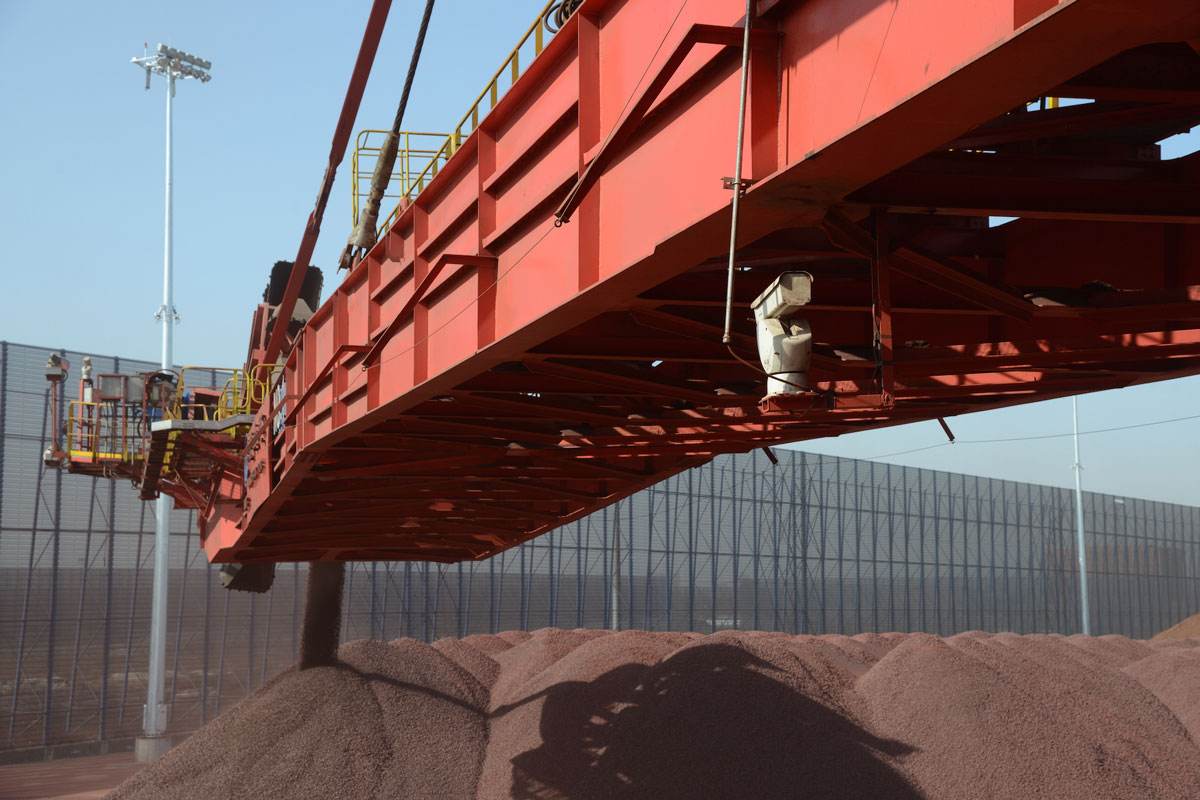What are the different types of reclaimers
What are the different types of reclaimers
reclaimers
A reclaimer is an automated device that removes material from storage and delivers it to a production line. With the development of industrial automation, there are more and more types of reclaimers. This article will describe the different types of reclaimers.

1. Vibrating reclaimer
The vibrating reclaimer is a common reclaimer that takes the material out of the storage and conveys it to the production line through vibration. The vibrating reclaimer is suitable for small particle materials, such as screws, nuts, bolts, etc. Its advantages are simple structure, convenient operation, and fast material retrieving speed, but its adaptability to materials is poor.
2. Vacuum reclaimer
The vacuum reclaimer is a reclaimer that uses negative pressure to suck and transport materials to the production line. It is suitable for materials of various shapes and sizes, such as plastic pellets, metal parts, food, etc. The advantages of the vacuum reclaimer are fast reclaiming speed, simple operation, and strong adaptability, but it needs to be equipped with a vacuum pump and pipeline, and the cost is relatively high.
3. Airflow reclaimer
The airflow reclaimer is a reclaimer that uses airflow to suck and transport materials to the production line. It is suitable for light materials such as plastic pellets, wood chips, paper, etc. The advantages of the airflow reclaimer are fast reclaiming speed, strong adaptability, and simple operation, but it needs to be equipped with compressed air and pipelines, and the cost is relatively high.
4. Barrel reclaimer
Bucket reclaimer is a reclaimer that takes materials out of storage barrels and transports them to the production line. It is suitable for materials of various shapes and sizes, such as granules, powders, liquids, etc. The barrel reclaimer has the advantages of simple structure, convenient operation and strong adaptability, but the reclaiming speed is slow.
5. Swing arm reclaimer
The swing arm reclaimer is a reclaimer that uses a swing arm to take materials out of the storage and transport them to the production line. It is suitable for materials of various shapes and sizes, such as metal parts, plastic products, food, etc. The advantages of the swing arm reclaimer are fast reclaiming speed, strong adaptability, and simple operation, but it needs to occupy a large space.
6. Tie rod reclaimer
Tie rod reclaimer is a reclaimer that uses a pull rod to take materials out of the storage and transport them to the production line. It is suitable for materials of various shapes and sizes, such as metal parts, plastic products, food, etc. The advantages of the tie rod reclaimer are fast reclaiming speed, strong adaptability, and simple operation, but it needs to occupy a large space.
The above is "What are the different types of reclaimers". Different types of reclaimers have their own advantages and disadvantages. It is very important to choose a reclaimer that suits your production line. JULI Machinery is a professional manufacturer of Side type Cantilever Stacker and other reclaimers, welcome to contact us.
 O'zbek
O'zbek slovenský
slovenský Azərbaycan
Azərbaycan Қазақ
Қазақ Latine
Latine ລາວ
ລາວ български
български नेपाली
नेपाली فارسی
فارسی Javanese
Javanese Українська
Українська Lietuvos
Lietuvos Română
Română Slovenski
Slovenski پښتو
پښتو Punjabi
Punjabi Bosanski
Bosanski Malti
Malti Galego
Galego Afrikaans
Afrikaans Esperanto
Esperanto 简体中文
简体中文 Српски
Српски मराठी
मराठी Ελληνικά
Ελληνικά čeština
čeština Polski
Polski ไทย
ไทย Nederlands
Nederlands Italiano
Italiano Tiếng Việt
Tiếng Việt Deutsch
Deutsch français
français русский
русский Português
Português Español
Español 한국어
한국어 Svenska
Svenska Malay
Malay اردو
اردو norsk
norsk Indonesia
Indonesia عربى
عربى Gaeilge
Gaeilge Türk
Türk Pilipino
Pilipino हिन्दी
हिन्दी Dansk
Dansk বাংলা
বাংলা English
English


What is a Metering Conveyor
In modern material handling systems, efficiency and precision are critical to maintaining smooth operations. Among the many specialized conveyors used in industries such as packaging, food processing, mining, and logistics, the metering conveyor plays a vital role. But what exactly is a metering conveyor, and why is it becoming increasingly important in production environments?
Read MoreJuli Engineering Gains Global Recognition Among Mining Conveyor Manufacturers
The mining industry relies heavily on efficient material handling systems to ensure productivity and safety in large-scale operations. Among the many solutions available, mining conveyors stand out as indispensable equipment for transporting bulk materials such as ore, coal, and aggregates. As demand for advanced solutions grows, Juli Engineering has established itself as one of the most reliable mining conveyor manufacturers, offering durable, high-performance systems tailored to global mining needs.
Read MoreDesign and Application of a Comprehensive Coal Spillage Handling System for Downwards Transportation Belt Conveyor
A belt conveyor with an annual production capacity of 3 million tons is installed in a main inclined roadway with a steep angle of 22°. During operation, issues such as coal overflow, spillage, and falling coal occur, particularly when transporting raw coal with high moisture content.
Read More